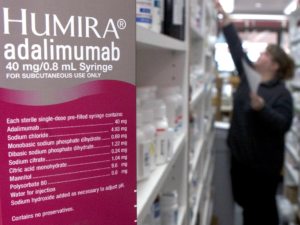
Finally! Humira’s biosimilars also hit the us market!
Humira was first marketed in 2002 and was protected in the US market until 2023, thanks to AbbVie’s use of two strategies :


As if this wasn’t enough, they are owned by, or have merged with, major carriers, and own a Specialty Pharmacies network
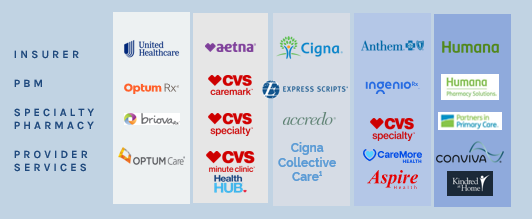
Cigna partners with providers via it’s Cigna Collaborative Care program. However, Cigna does not directly own healthcare providers.
Source: Drug Channels, 2021
Absent any legal definition, let’s just say that specialty drugs are expensive, used to treat complex conditions, and may require special handling. This complex handling will need to have them distributed via Specialty pharmacies.

Patients and their doctors hate prior authorizations and step therapies, seen as time consuming, sometimes affecting patients’ health.
But PBMs would have different and serious reasons to use them:
While there are real justifications for these methods, too often major PBMs practice “rubber stamped” step therapies, probably because they can’t bring themselves up to forfeit the revenues they get from their specialty pharmacy networks.
A groundbreaking study published on JAMA November 5, 2021, pieced together data from different states and private sources, and estimated the share of revenues flowing to the different players in the production and distribution channels for 32 insulin products.
The table below shows the manufacturers’ share of revenues decreased by 33% in 5 years while PBMs and pharmacies substantially increased their piece of the pie: +228% for pharmacies and +154% for PBMs.
All the while insulin prices increased by 40%!
Average Distribution of $100 in Insulin Expenditures for 32 Insulin Products Across Distribution System Participants, 2014-2018
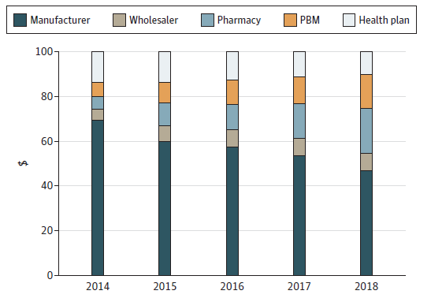
Source: JAMA Health Forum. 2021;2(11):e213409. doi:10.1001/jamahealthforum.2021.3409 (Reprinted
It’s a striking example of how deeply traditional PBMs have failed to their core value proposition to negotiate the best conditions for their clients and how dysfunctional the drug market has become.
Despite all the rhetoric deployed by these powerful players, the evidence is clear: they have failed in their mission to provide drugs at competitive prices to their customers. Since the PPACA entered in force, prices have risen wildly, especially in the second half of the last decade.
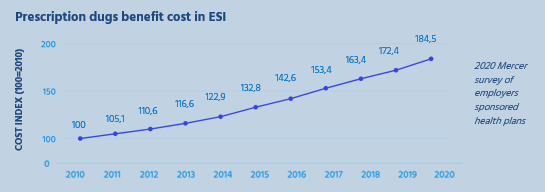
As a consequence, today Americans on average pay their drugs 3 to 5 times more than people in other developed countries, as shown in the graph below!
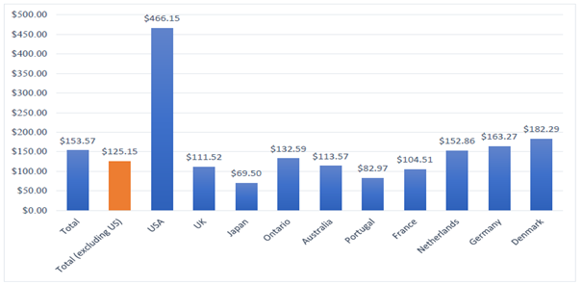
Source: US House Ways and Means Committee sept.2019 “A bitter pill to swallow”
Employers now devote over 20% of their health plans’ total spend to drugs. For many employers, especially small ones, that figure can be as high as 30%. And this trend is due to continue if nothing is done.
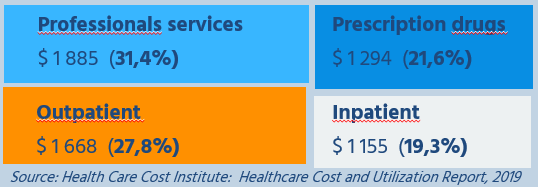
Today, many Americans forego their needed care, which represents
a “Ticking Time Bomb”, linked to the issuing deteriation of their health status.
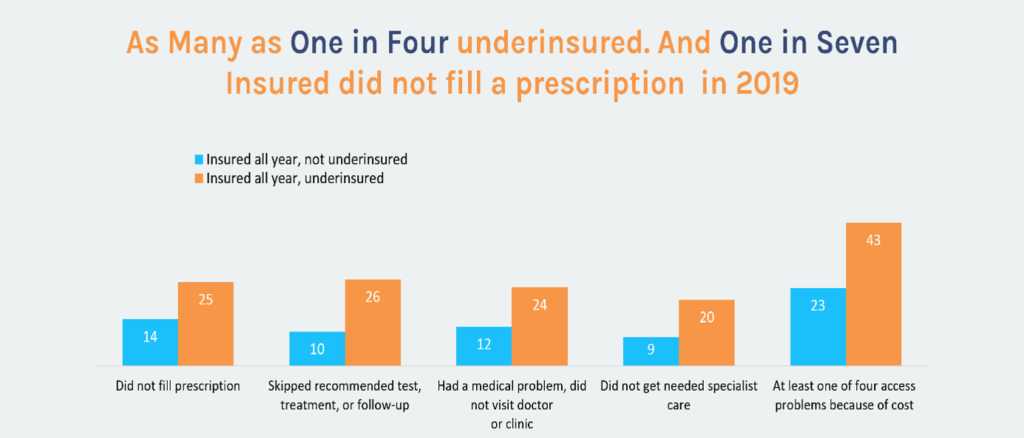
Source: Commonwealth Fund: “biennal study on Health Insurance coverage: a looming crisis in affordability”
Recent developments have shown that there is not much hope on political action to correct these huge market flaws and find remedies to this dire situation.
There is however an opportunity for employers to take action, based on new regulations, such as Transparency in Coverage and the No-surprise Act, and regain control of their health plans.
A new generation of advisers and PBMs is coming to the forefront, with strong ethical values prioritizing the patients and employers’ needs, ready to help them in their endeavor.

Humira was first marketed in 2002 and was protected in the US market until 2023, thanks to AbbVie’s use of two strategies :

After wrapping up the 2023 enrollment, employers are now planning their next moves to mitigate the continuously growing healthcare costs impacting their plans. This is particularly true for pharmacy costs.

PhRMA, a Big Pharma lobbying group, released an advertising touting that drug prices were not fueling inflation. To prove it, they produce the graphic below.
Care2Care secured a strategic partnership with an innovative, transparent, 100% pass-through PBM.
Adding to our expertise in international drug sourcing, we expand our offer to the full pharmacy benefit management.
